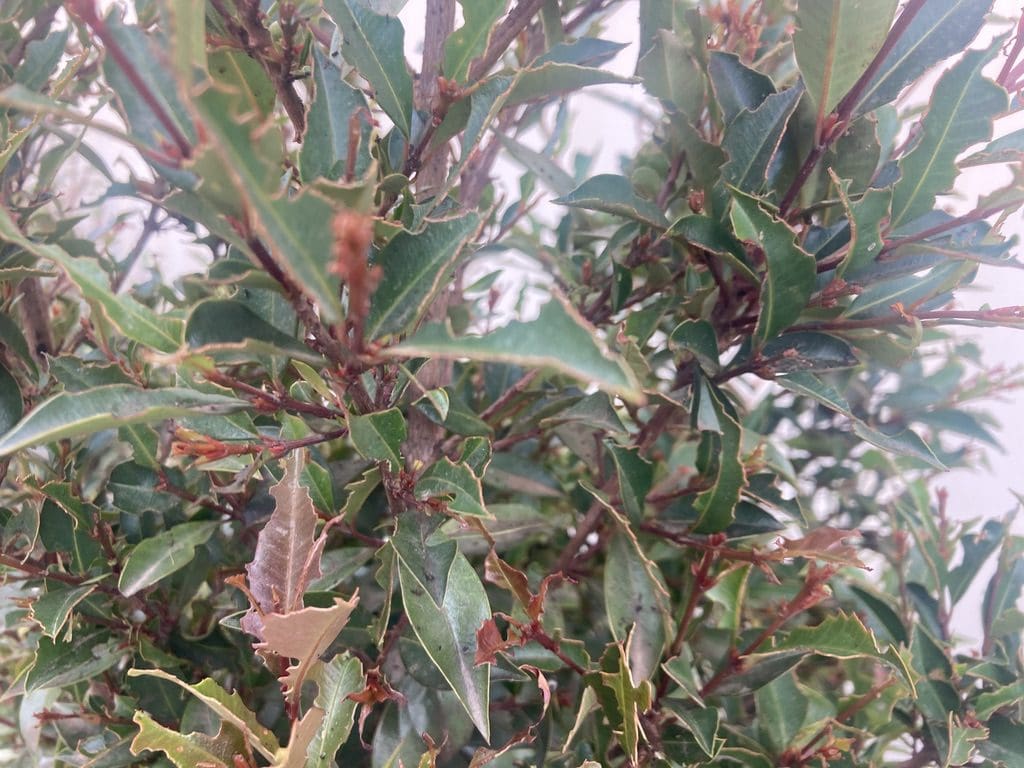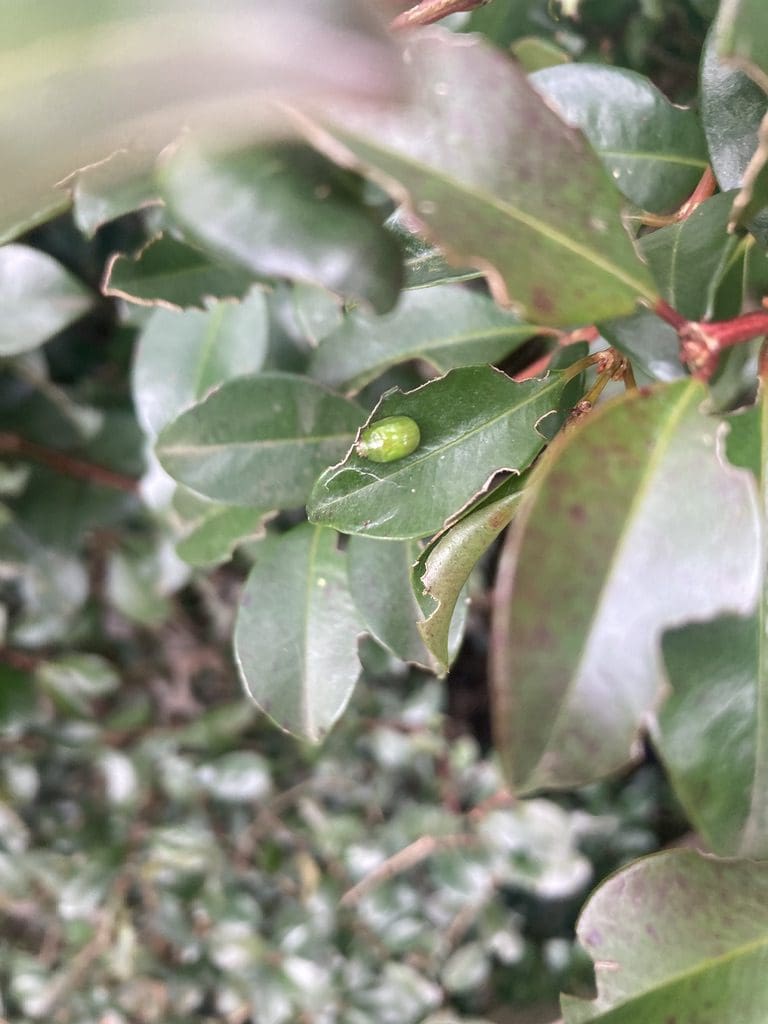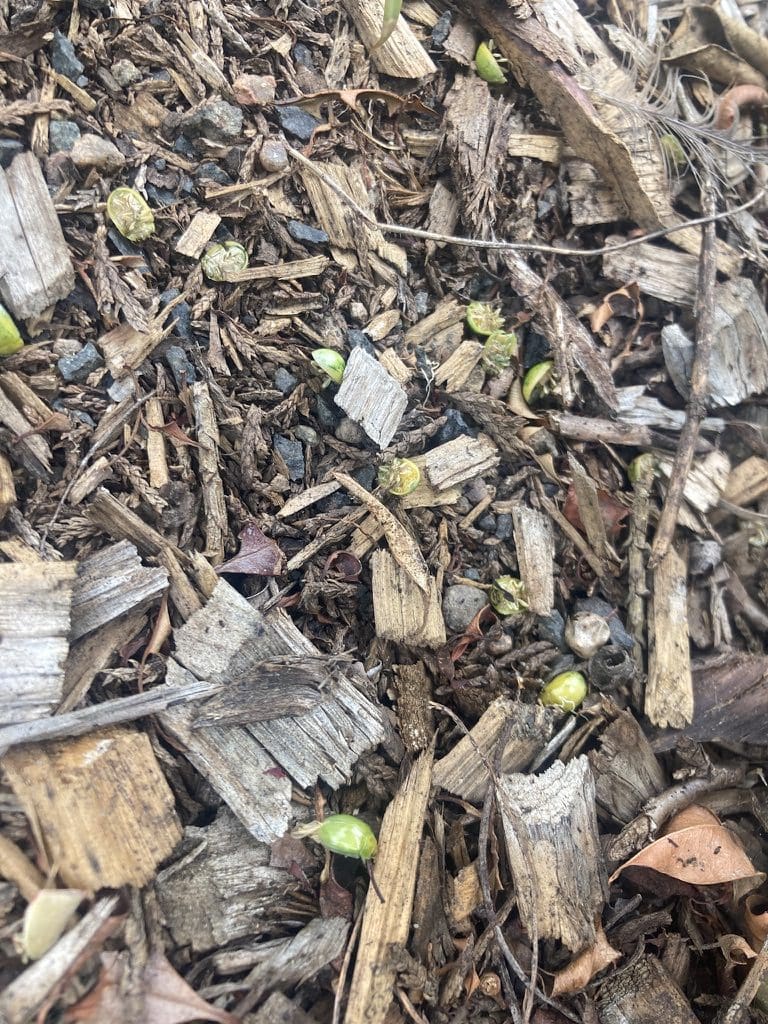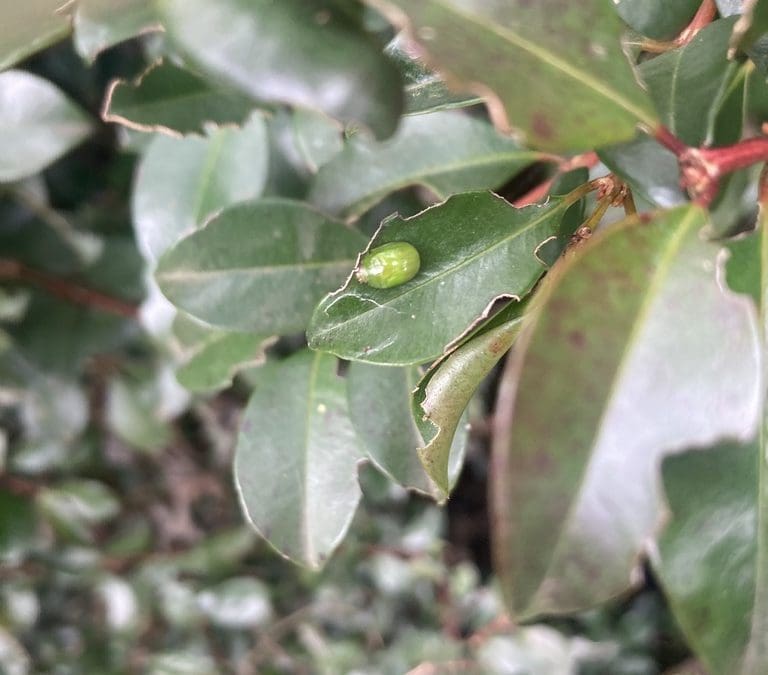


Typical damage caused by the Lilly Pilly Beetle
A Lilly Pilly Beetle and the damage they cause
Dead Lilly Pilly Beetles shortly after a treatment
Lilly Pilly Beetles are becoming a much more common pest.
For many years The Lilly Pilly Beetle (Paropsides calypso) has been harrassing hedges in QLD and South to around Coffs Harbour for many years however in the last 6-8 years they have marched Southwards and are being found this year in very large numbers as far South as the Southern Highlands.
There are pesticides that can be used to treat the bug but care must be taken as many of these are fatal to bees. Avoiding application in areas where plants are flowering will help.
One of the reasons that these insects are becoming much more of a pest is because of the increasing use of monoculture or mass plantings of the same type of plant for instance in hedges. This gives the insects easy access to a huge number of the same species of plant whereas in nature these plants occur much more spread making it mor difficult for masses of insects to be a problem.
What can I use to treat for Lilly Pilly Beetle?
Many various synthetic pyrethroid pesticides include the Calypso beetle and larvae on the label and will give quick knockdown. Synthetic Pyrethroids however are not persistent and so will give no ongoing protection to the plant.
A systemic pesticide can be used before the beetle infests allowing the product to be taken in to the plant and spread through its sap system into the leaves so that when the beetles and larvae turn up the leaf is toxic to them and will kill them on ingestion.
Imidacloprid is a systemic pesticide that was sold for years as Confidor however appears to have been taken off the home garden market. The active constituent Imidacloprid is available to professionals under varios trade names and should only be used by suitably qualified experienced technicians.
Imidacloprid has recieved much bad press as the group of pesticides it belongs to (Neonicitinoids) has been blamed for mass bee kills. Use of the product should be only after investigation of the area to be treated for flowering plants and where plants are flowering near the area to be treated an alternative pesticide should be considered or treatment delayed until after flowering has ceased.
At Pestgo we have the experience and training to ensure we can effect a treatment that will see your hedge recover and can protect it into the future.

